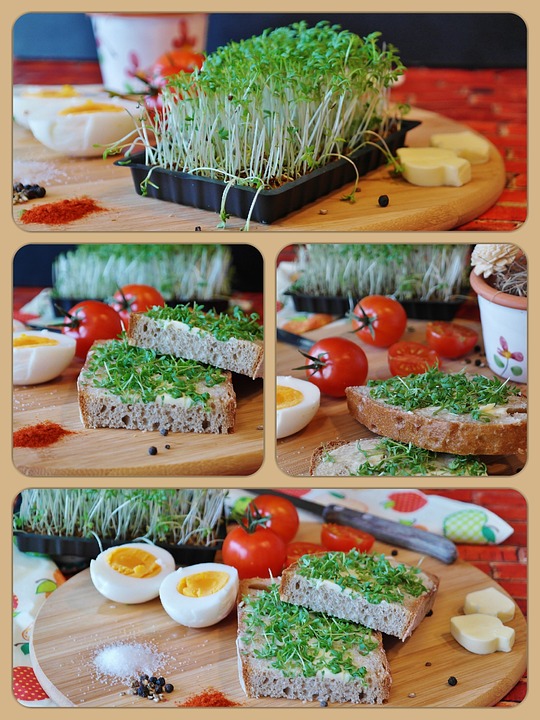Growing your own fruits can be a rewarding and fulfilling experience. The satisfaction of plucking a ripe, juicy fruit straight from your own garden and enjoying its sweet taste is unparalleled.
Not only is it a great way to improve your diet and overall health, but it also gives you control over the quality and freshness of the produce you consume. In this article, we will explore the steps to cultivate a bountiful crop of fruits right in your own backyard.
The first step in growing your own fruits is to choose the right varieties for your region and climate. Different fruits have specific requirements for soil type, sunlight, and temperature.
Conduct research or consult with local horticulturalists to identify the fruits that are best suited for your area. Consider factors like space availability, time commitment, and personal preferences when making your selections.
Some popular fruits for home cultivation include strawberries, blueberries, apples, peaches, and citrus fruits.
Before planting, it is essential to prepare the soil properly to create an optimal growing environment. Start by clearing the area of any weeds or debris and loosen the soil with a garden spade or tiller.
Incorporate organic matter such as compost or well-rotted manure to enhance the soil’s fertility and moisture retention. Conduct a soil test to determine its pH level and make any necessary adjustments.
Fruits typically thrive in slightly acidic soil with a pH range between 6 and 7.
Once the soil is prepared, it’s time to start planting your chosen fruit trees or shrubs. Dig a hole of appropriate depth and width, ensuring it is large enough to accommodate the root system.
Gently remove the plant from its container and position it in the hole, making sure the top of the root ball is level with the soil surface. Fill the hole with soil and water thoroughly to settle it.
Provide sufficient water to the newly planted fruits, especially during dry periods or while they establish their root systems.
Regular care is crucial for the success of your fruit crops. Pruning is essential to maintain shape, encourage proper growth, and remove any damaged or diseased branches.
Applying mulch around the base of the plants helps conserve moisture, suppress weeds, and regulate soil temperature.
Fertilize the fruits with a balanced, slow-release fertilizer according to the specific requirements of each fruit variety.
Pest and disease prevention strategies should also be employed, including proper hygiene, using organic insecticides, and monitoring for signs of trouble.
The ultimate joy of growing your own fruits comes when it’s time to harvest and enjoy the delicious rewards. Each fruit variety has its individual signs of ripeness, so learning these indicators is essential.
For example, apples are ready for harvest when they can be easily twisted off the tree, while peaches should have a slight give when gently squeezed.
Remember to harvest fruits at their peak of maturity for the best flavor and sweetness.
Once harvested, handle your fruits with care to avoid bruising or damage. If storing, make sure to keep them in a cool and dry place to prolong their shelf life.
Enjoy your homegrown fruits fresh or use them in various culinary preparations such as pies, jams, smoothies, or salads. Sharing your bounty with friends and family is also a delightful way to spread the joy.
FAQs
Q: How much space do I need to grow my own fruits?
A: The space required depends on the type and number of fruits you wish to grow. Some trees like apple or peach trees need ample space, while smaller plants like strawberries or blueberries can be cultivated in containers or small patches of land.
Q: How long does it take for fruit trees to bear fruit?
A: The time it takes for fruit trees to bear fruit varies depending on the type and variety. Some fruits like strawberries can start producing within a few months of planting, while others like apple or citrus trees may take several years. It is essential to research the specific fruit variety and its average maturity period to set realistic expectations.
Q: Can I grow fruits in containers?
A: Many fruits can be successfully grown in containers, making them an excellent choice for those with limited outdoor space. Compact varieties of fruits like blueberries, strawberries, or citrus trees can be grown in pots or planters. Just make sure the containers provide adequate drainage, nutrient-rich soil, and sufficient sunlight for optimal growth.
Q: What are some common pests and diseases that affect fruit crops?
A: Common pests that affect fruit crops include aphids, fruit flies, snails, and birds. Diseases such as powdery mildew, fungal rot, and bacterial canker can also pose challenges. Regular monitoring, proper hygiene practices, and the use of organic insecticides or fungicides can help prevent and manage these issues. Consult with local horticultural experts to identify and address specific pest and disease problems common in your area.




